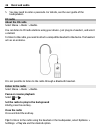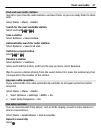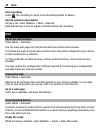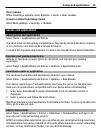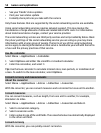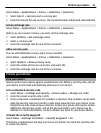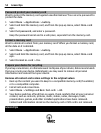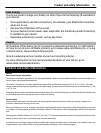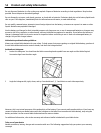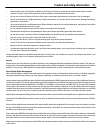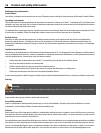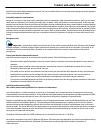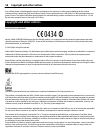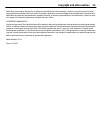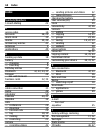
Save energy
You do not need to charge your battery so often if you do the following (if available for
your device):
• Close applications and data connections, for example, your Bluetooth connection,
when not in use.
• Decrease the brightness of the screen.
• Set your device to enter power saver mode after the minimum period of inactivity,
if available in your device.
• Deactivate unnecessary sounds, such as key tones.
Recycle
All materials of this device can be recovered as materials and energy. For information
on how to recycle your old Nokia products, go to www.nokia.com/werecycle, or using
a cellular phone, www.nokia.mobi/werecycle.
Recycle packaging and user guides at your local recycling scheme.
For more information on the environmental attributes of your device, go to
www.nokia.com/ecodeclaration.
Product and safety information
Battery
Battery and charger information
This device is intended for use with a BL-5CT rechargeable battery. Nokia may make additional battery models available for this
device. Always use original Nokia batteries.
This device is intended for use when supplied with power from the following chargers: AC-8, AC-15, AC-3, AC-11. The exact
charger model number may vary depending on the type of plug. The plug variant is identified by one of the following: E, X, AR,
U, A, C, K, or B.
The battery can be charged and discharged hundreds of times, but it will eventually wear out. When the talk and standby times
are noticeably shorter than normal, you need to replace the battery.
Battery safety
Always switch the device off and disconnect the charger before removing the battery. When you unplug a charger or an
accessory, hold and pull the plug, not the cord.
When your charger is not in use, unplug it from the electrical plug and the device. Do not leave a fully charged battery connected
to a charger, as overcharging may shorten the battery’s lifetime. If left unused, a fully charged battery will lose its charge over
time.
Always keep the battery between 15°C and 25°C (59°F and 77°F). Extreme temperatures reduce the capacity and lifetime of the
battery. A device with a hot or cold battery may not work temporarily.
Accidental short-circuiting can happen when a metallic object touches the metal strips on the battery, for example, if you carry
a spare battery in your pocket. Short-circuiting may damage the battery or the connecting object.
Product and safety information 53




